Better than Ozempic? 50 years of the Brompton bicycle
Owen Wilson, James May and most of the middle-aged men and condescending hipsters you know love them. As the iconic folding bike turns 50 Lotte Brundle hops on one with the company's CEO.


Is there anything more embarrassing than riding a Brompton bike? Legs akimbo, looking very much akin to a circus bear peddling around on a laughably small tricycle. The model of transport immediately brings to mind both Hugh Bonneville’s incompetent and middle-aged BBC executive Ian Fletcher in the TV series W1A and awful trendy hipsters in Hackney who drink flat whites, wearing beanie hats too small for their heads and lecture you about recycling while surreptitiously taking a peep down your blouse.
Embarrassment, however, is not an issue to its millions of fans who wax lyrical about how it’s changed their commuting life in London. Nor is it an issue for Will Butler-Adams, the CEO of the collapsible bike company who is wearing shorts, in winter, when we meet at Brompton’s west London factory. ‘On you get,’ he says, thrusting an electric model into my hands. The best way to experience a Brompton is, naturally, to ride one — not possible for everyone due to their £1,000-£6,000 price tag, a bit of a gear change from the £320.78-£368.95 it cost in the early days of the bike company. I must admit that they’re a slick ride, especially the electric model which propels me forward with a surprising force.
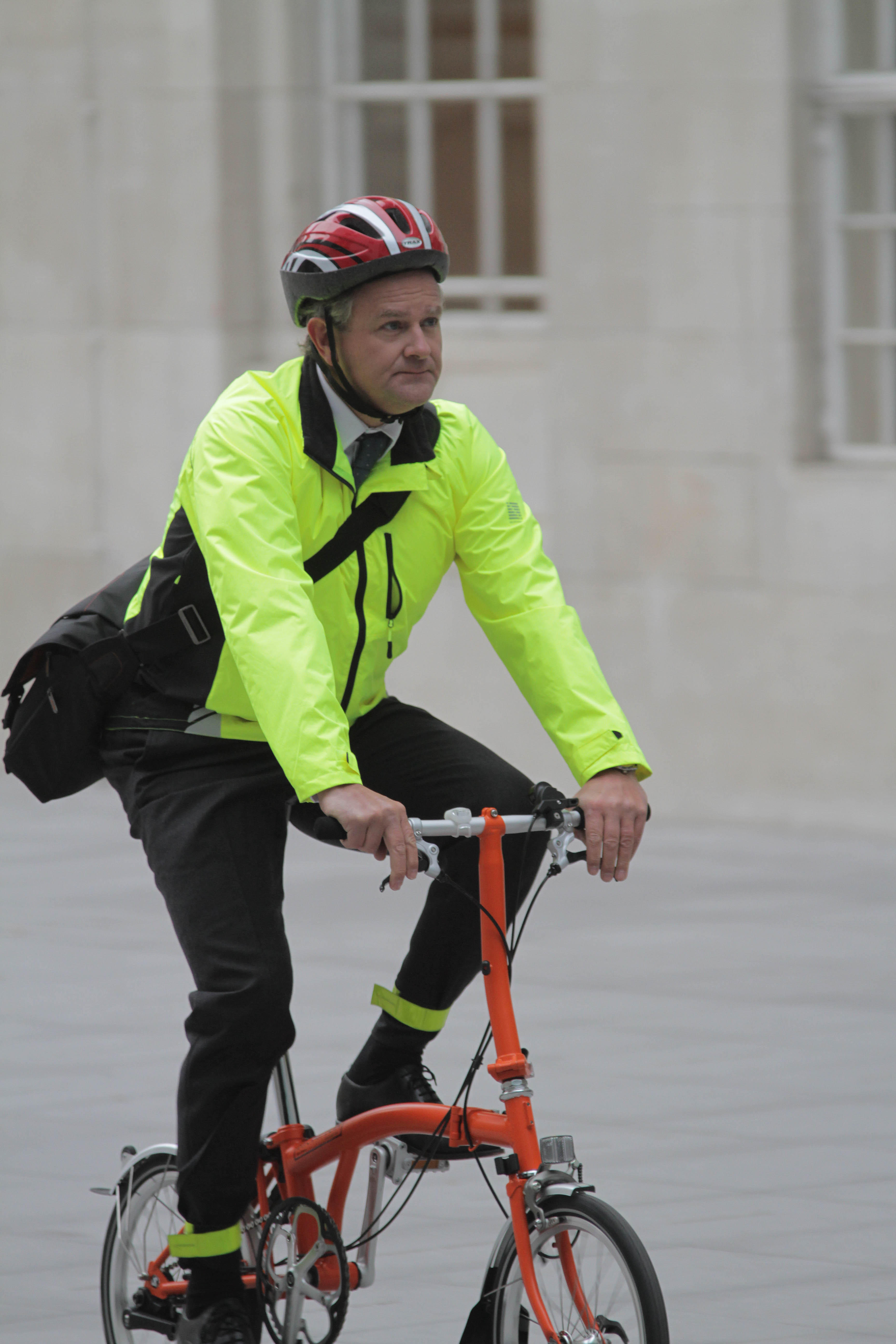
Hugh Bonneville as chronic BBC Bromptoner Ian Fletcher in the sitcom W1A.
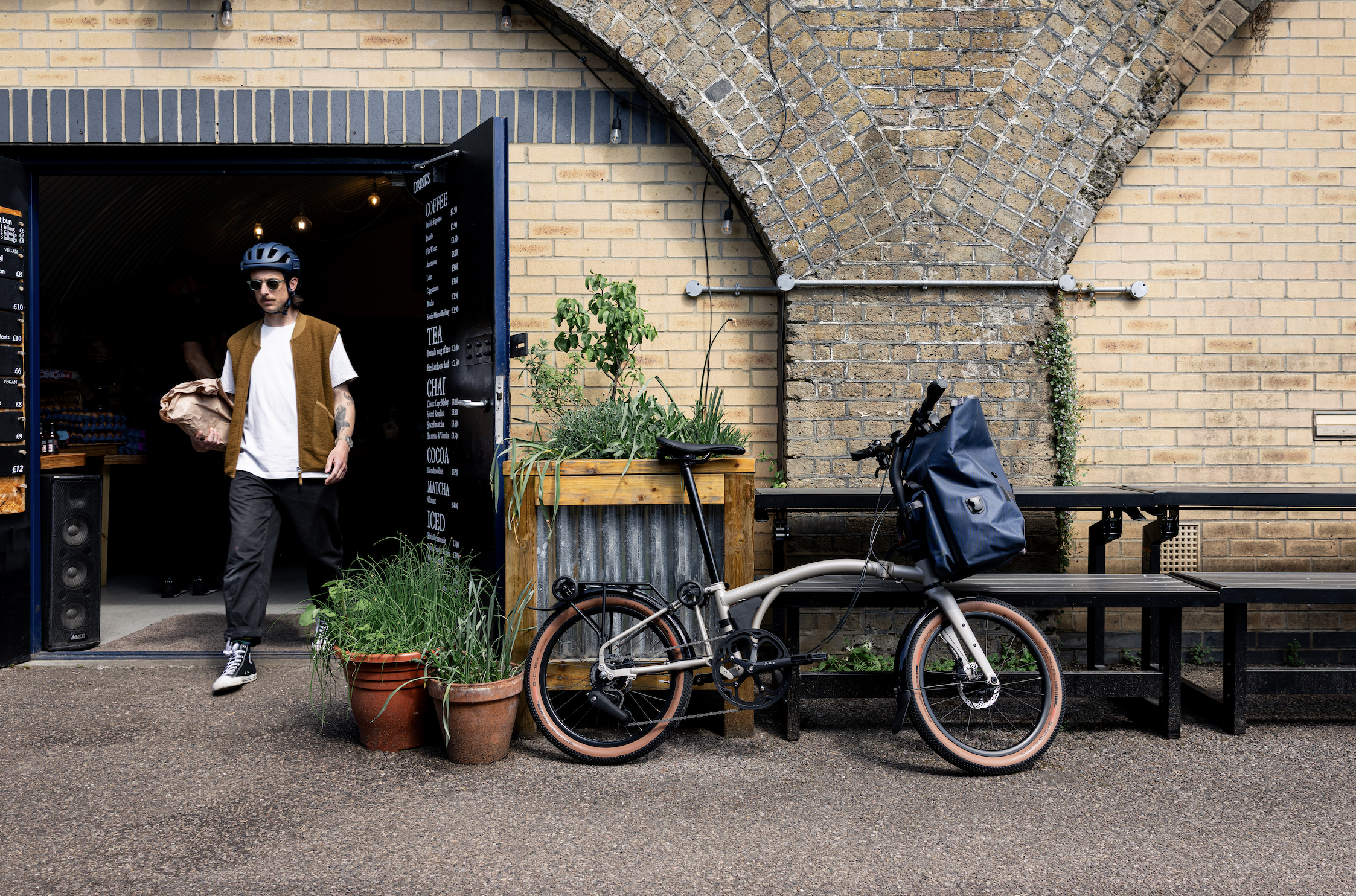
And the other a-typical, flat white-drinking, Brompton user. As seen in one of Brompton's promotional shots.
‘In the very early days, yes, you needed confidence to ride a Brompton,’ Will says, pedalling casually around the factory's exterior, greeting colleagues as he goes. ‘It was a problem when I first started riding — I'm 6ft 4in, and my friends took the mickey out of me. You know, tiny little wheels, tall, gangly guy whizzing along, but that is no longer the case. We've normalised Bromptons because they’re so useful.’
I am here as it is the bike company’s 50th anniversary year and they are celebrating in style: they have opened their factory doors to the general public for behind-the-scenes looks and launched a special edition bike to honour the milestone.
The company’s founder, Andrew Ritchie, created the first bike in 1975 in his London flat which overlooked the Brompton Oratory, a Roman Catholic parish church in South Kensington, and the brand has only gone from strength to strength since they adopted the building’s name. A Brompton bike, ridden by Sir Chris Hoy, was chosen to represent London in the closing ceremony of the 2008 Beijing Olympics and won Prince Philip’s Designers Prize for ‘outstanding achievement in design’ shortly afterwards. With more than a million bikes designed, developed and made, and distribution to 47 different countries, Brompton bikes’ collapsible nature, and ability to fold down to a third of their size, has become invaluable in many commuter cities, including London. They are less likely to get stolen as they can be brought inside with their owner and make combo-journey’s (involving cycling and public transport) a relative doddle.
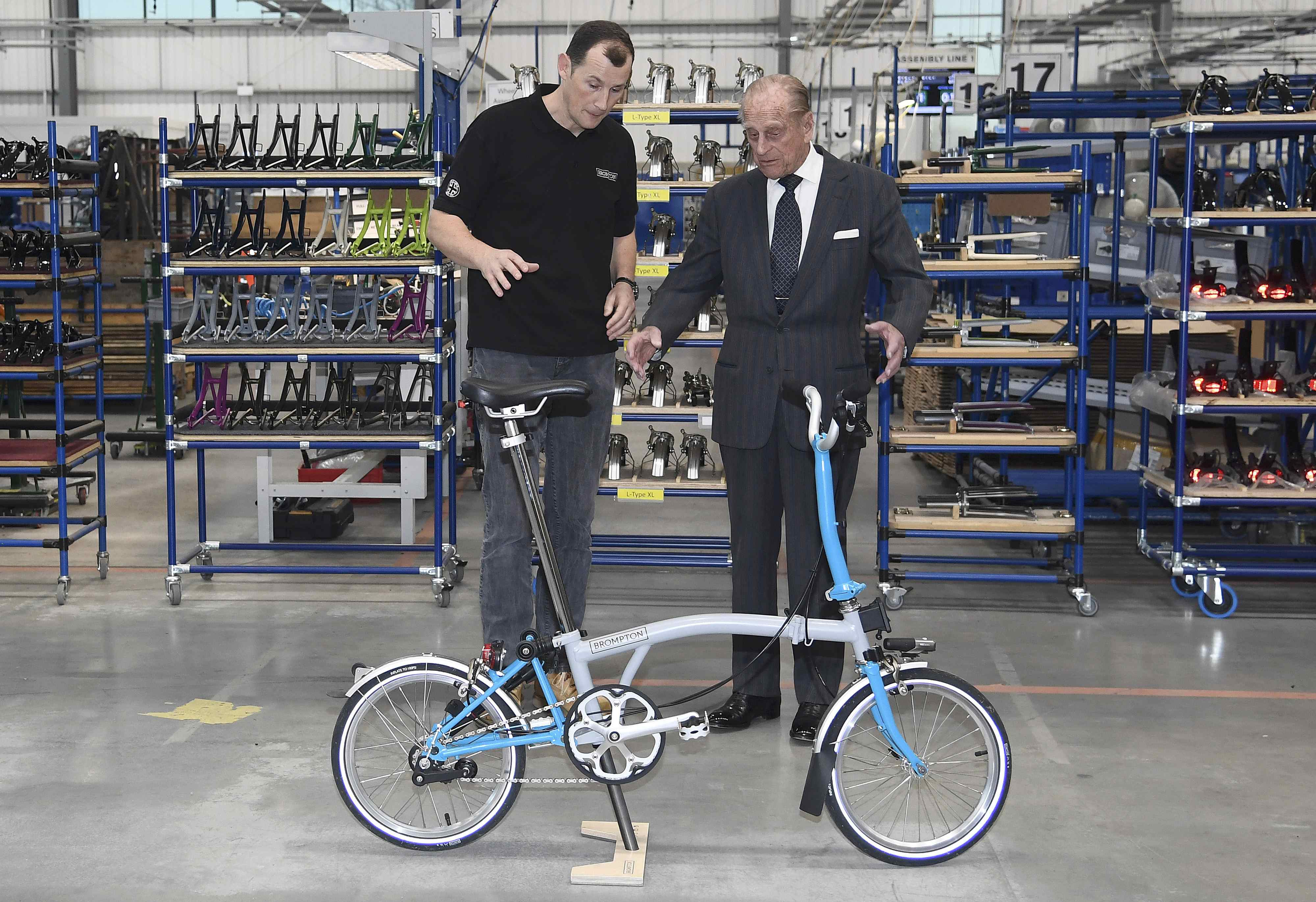
Will Butler-Adams showing the late Prince Philip a Brompton bike.
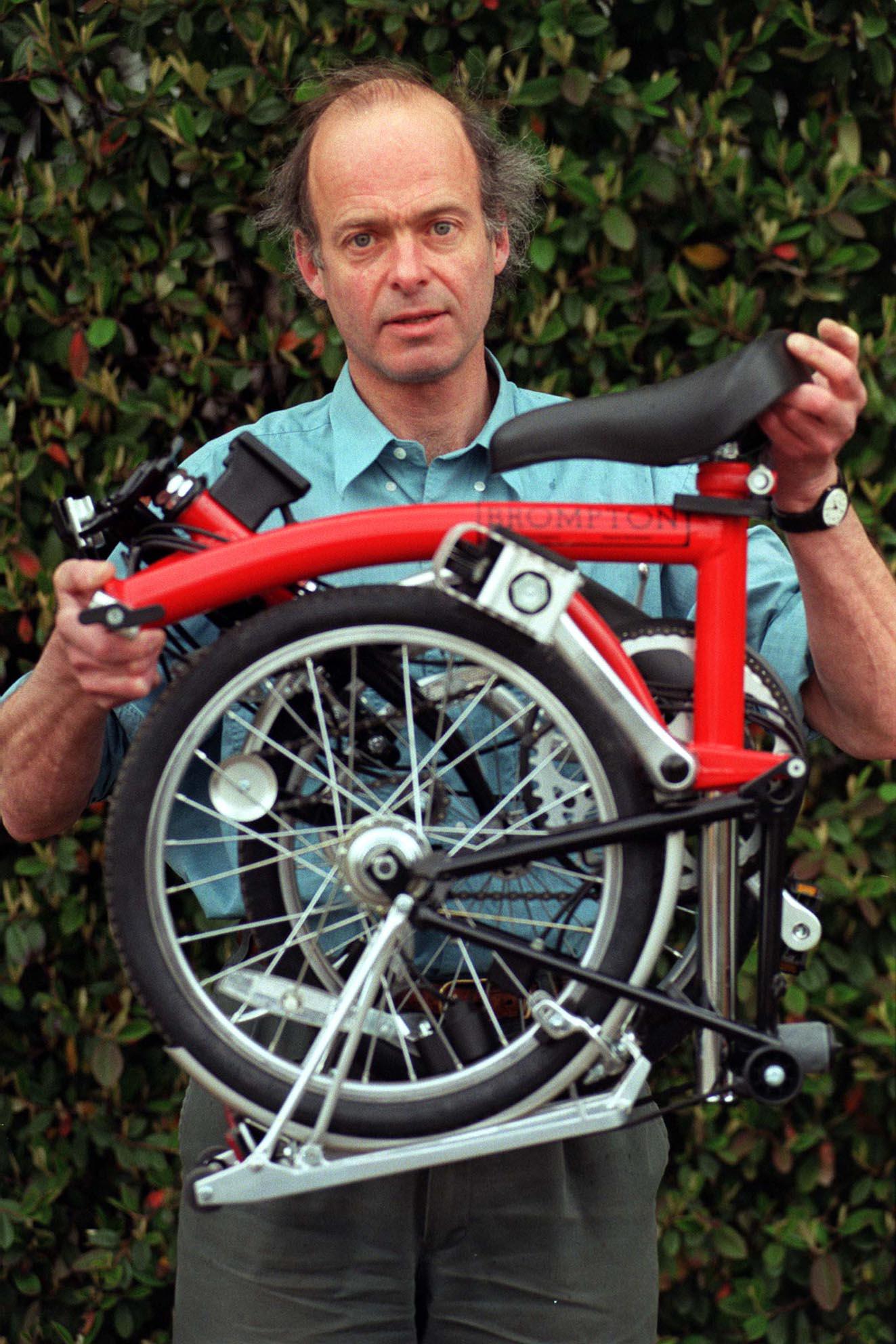
Andrew Ritchie, the founder of Brompton.
There are over 80,000 Brompton bikes on the roads in the capital, according to the brand. A Yorkshireman and self-identified ‘country bumpkin’, CEO Will got the job quite by chance, when he was chatting to a man on a bus to Henley-on-Thames. That man happened to be a friend of Andrew, the bike’s inventor. On discovering Will was an engineer, the two were put in touch. ‘He was somewhere between Back to the Future and A Beautiful Mind, his socks tucked up into his trousers,’ Will says of his first meeting with Andrew.
Motivated by his distaste for the Underground, Will was brought on to develop the Brompton brand. ‘I’m not good in cities. They're claustrophobic, they're busy and they swish you down and put you underground,’ he says. ‘Whereas with a bike in the city, suddenly you have this liberation. It really made living in London a delight. And then I met our customers, and they have had the same experiences. A bike changed their life.’
Exquisite houses, the beauty of Nature, and how to get the most from your life, straight to your inbox.
He is not, he insists, a cyclist: ‘You walk a lot of places, but you don't call yourself a walkist,’ he says with a tone that implies: ‘Duh!’ ‘No one in Amsterdam or in Copenhagen calls themselves a cyclist,’ he adds, clarifying that Brompton’s are more for people like him who use a bike to get from A-B, rather than for hard-core cyclists. ‘Lycra’s never been my thing,’ he says.
The merits of a Brompton bike are obvious. Their foldability mitigates their ability to be stolen, assuming you can take them with you wherever you end up. (I recently interviewed someone at the restaurant Franco’s in St James’s and they had a sign on the front door which indicated that they had had quite enough of the brand, thank you very much).
It has fans among the rich and famous too. James May is a devout Bromptoner and has previously called it ‘the ideal motorists bicycle’ in the pages of Country Life. Actors Owen Wilson and Henry Golding are among the Hollywood stars that have been spotted merrily peddling merrily away on the brand’s bicycles and BBC 2’s Jeremy Vine often scrunches his 6ft 3in frame over a model when departing Broadcasting House.
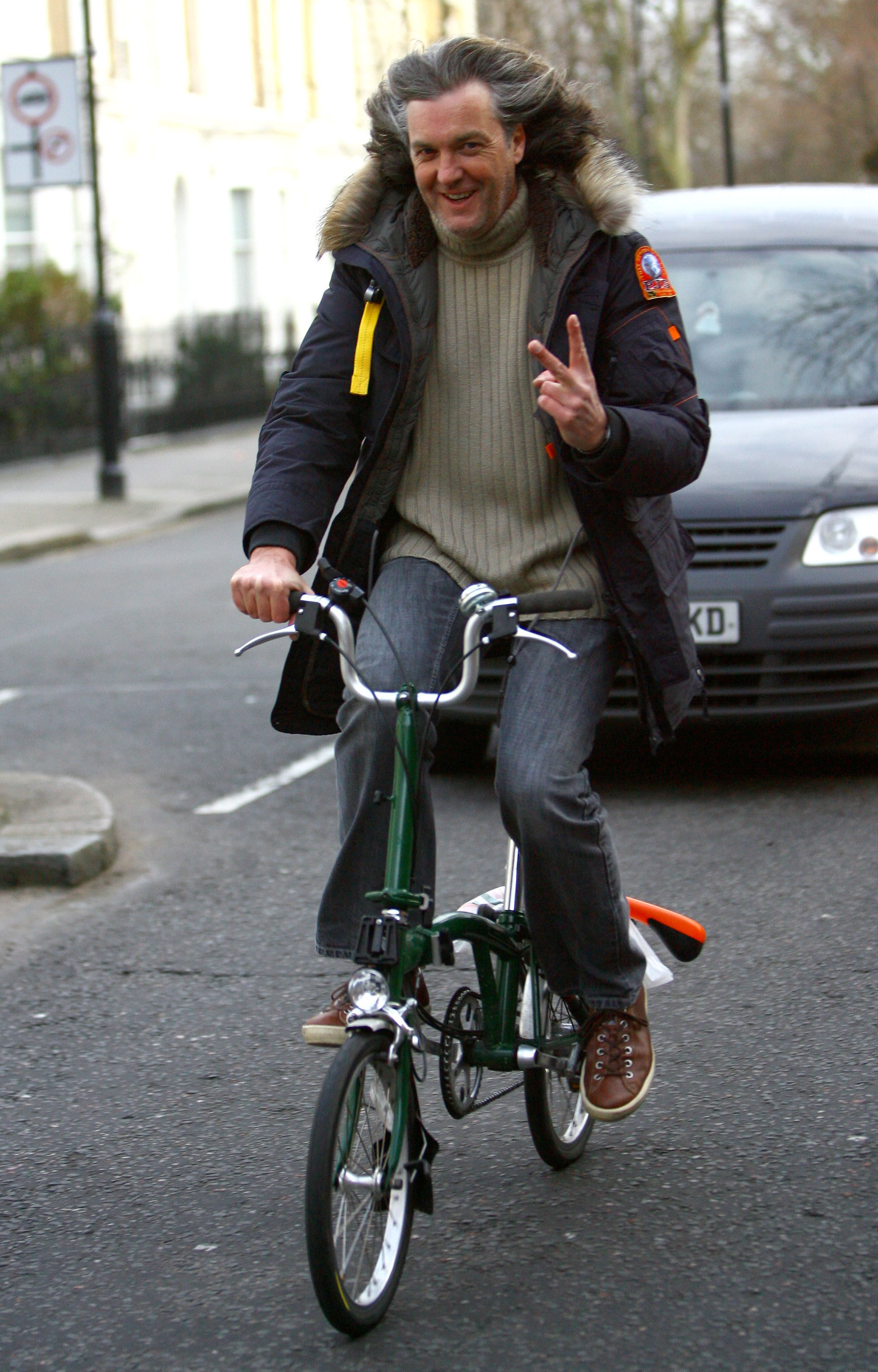
Former Top Gear host James May can't get enough Brompton in his life, apparently.
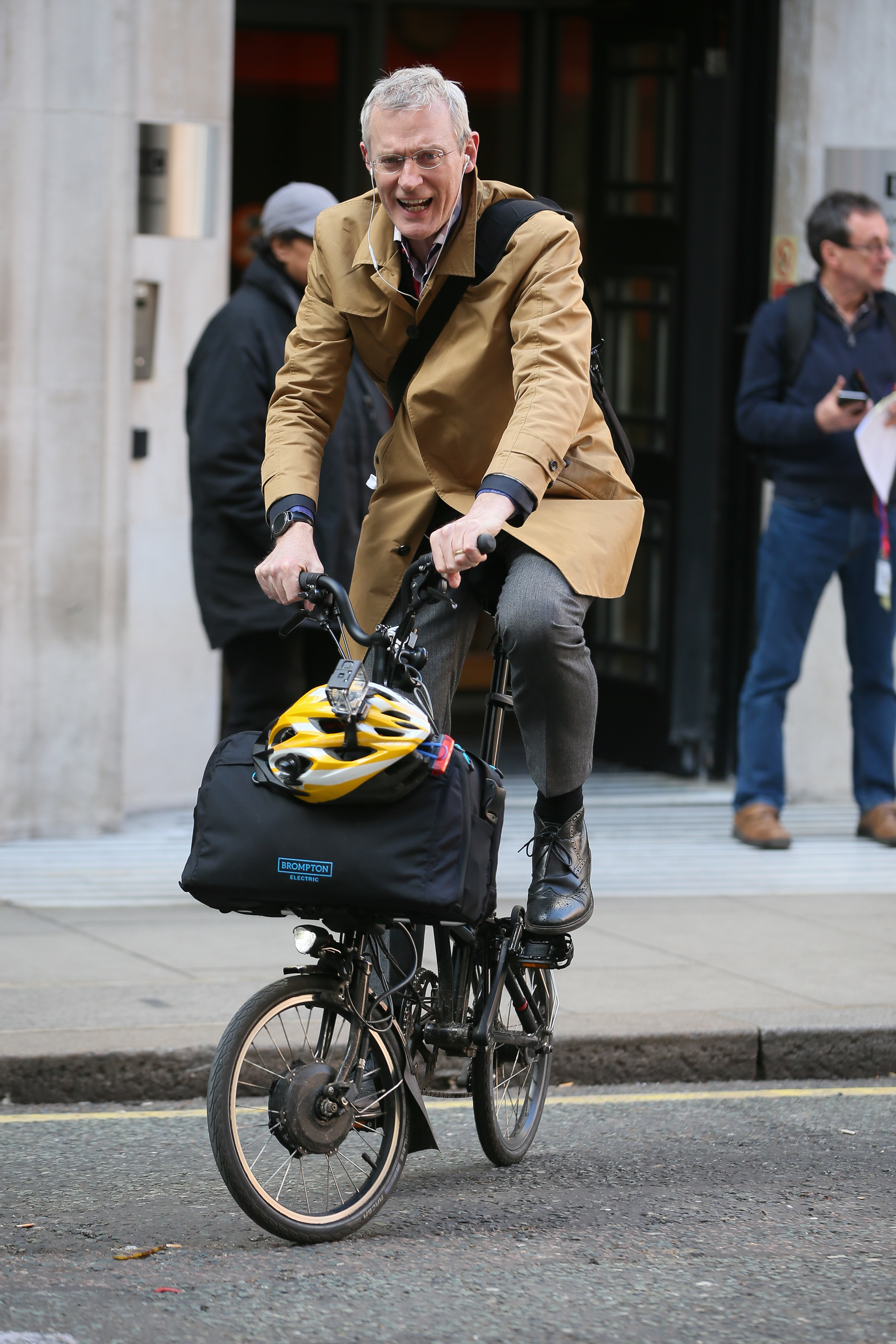
Jeremy Vine — not the stature you expect to see on this type of bike.
I had assumed the biggest competition for the brand would be the hirable Boris bikes or their Brat-coloured Lime alternatives — beloved by many drunkards on a night out in the city centre for a hilarity-inducing and incredibly dangerous end to their night. Not so. It’s the tube and cars that are Brompton’s biggest adversary. ‘You think it's better to go under the ground where there's awful quality of air, stuffed into a metal, round tube with lots of people with illnesses spluttering on you, doing no exercise?’ Will asks me, accusatorily, when I admit that I don’t cycle to work. ‘You think that's better and lower risk than going above and learning about your city and cycling through Hyde Park and discovering the little back streets?’ he continues. I delicately mention that I worry about being hit by a car on London’s busy roads. This suggestion is dismissed. ‘Many more people will die of cardiac arrest, mental health illnesses and heart disease per capita. The risks are so much lower,’ he says.
Their other main competitor is, surprisingly, Ozempic, he seems to suggest. ‘People are running around thinking that the solution to their wellbeing is injecting themselves with a fat drug rather than doing more exercise … In the 1950s people got around by bike, and we didn't have the same chronic health problems that we do now.’
The proof is in the pudding: a lot of Brompton’s employees on the factory floor cycle in and seem more than happy to do so, and indeed to work for the company. They can borrow a bike for up to six months when they join and then can buy one, for 40% of the retail price, and pay for it over two years. They work a four day week and are paid well for it, Will says. ‘If we look after them, they will look after us,’ he explains. ‘Golden Handcuffs! We invest a lot in them, but it's a very unique skill.’
But although Brompton factory workers are said to be fans, other reviews are decidedly mixed. Journalist Lucy Higginson rode a Brompton bike for years on her London commute. ‘Often I would ride the thing one handed over speed bumps, with a laptop bag and a very expensive and delicious mocha in the other hand, and I became quite good at that,’ she recalls, wistfully.
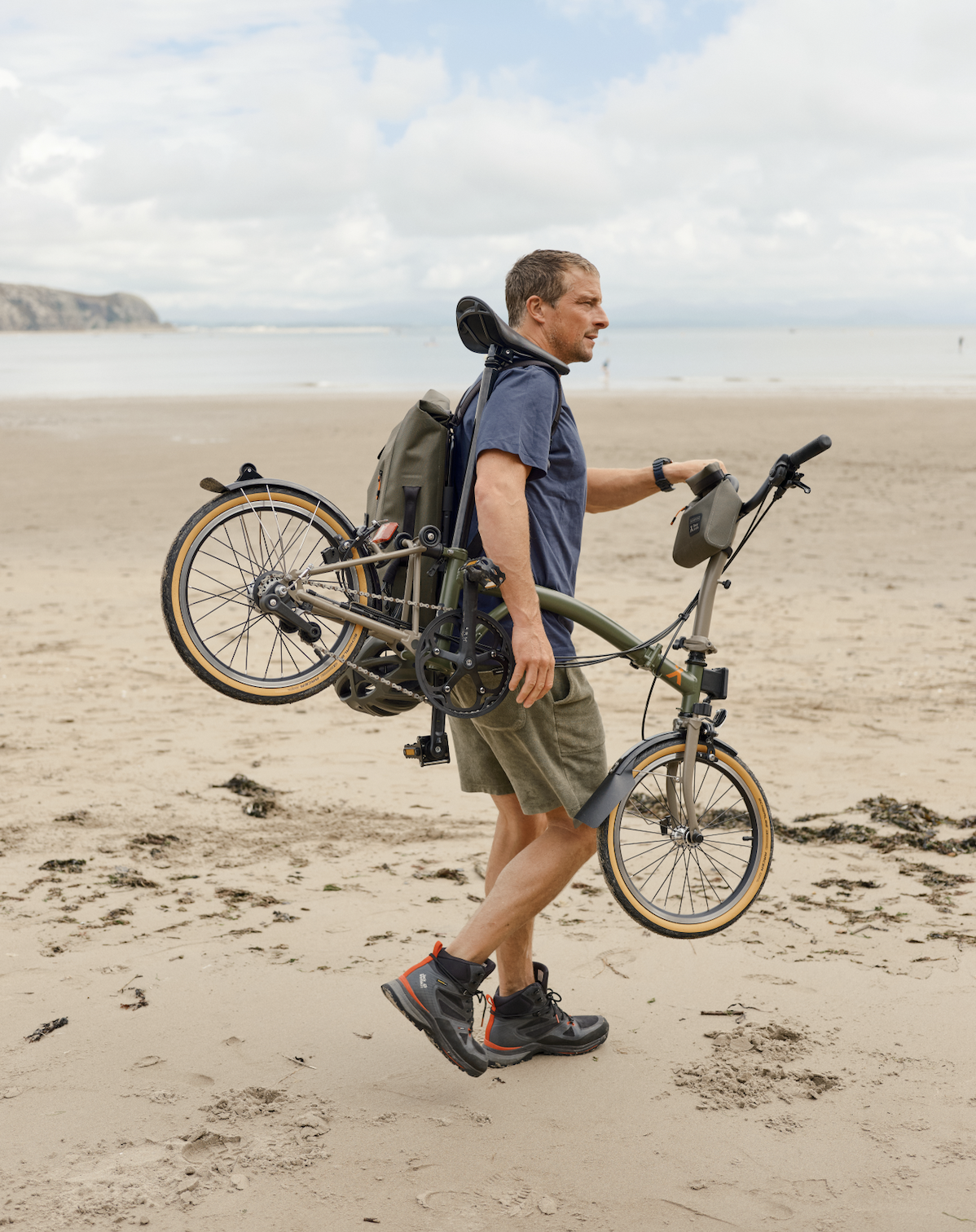
Adventurer Bear Grylls takes his Brompton for a walk on the beach.
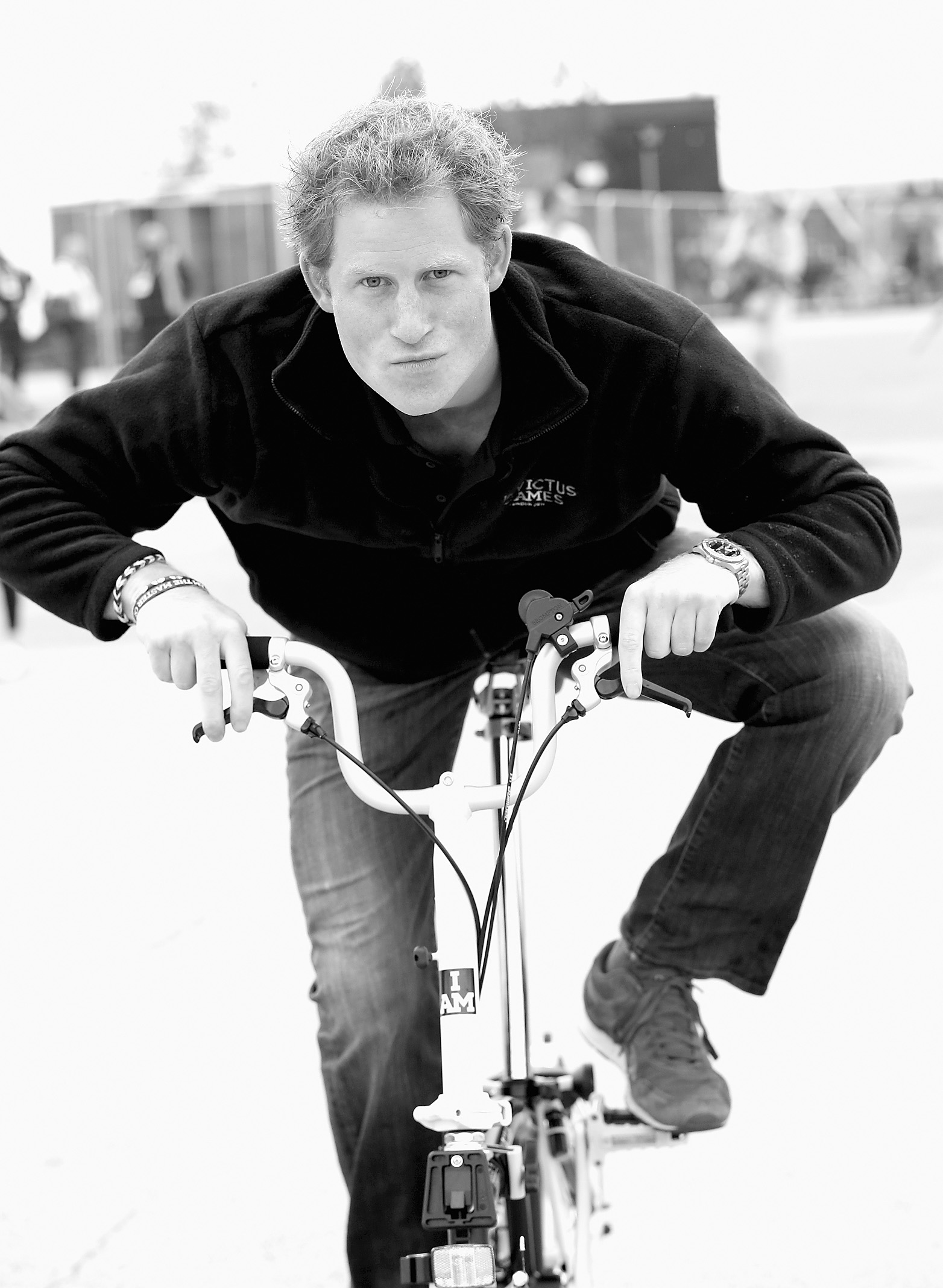
A young Duke of Sussex getting his pedal on.
‘They're the best, basically. I mean, when you flick them together to squash them you become like a kind of SAS officer with an AK 47 — you just become very dexterous. And they are beautifully engineered. Also, given that bike theft is rampant, it's very useful to be able to take your bike with you and not lose sight of it.’
Alas, Lucy’s journey on her Brompton came to an end when her husband illadvisably went into Costa coffee, leaving her beloved bike outside and thus completely negating its primary feature — portability. ‘In the time it took him to be handed a double espresso, it had gone. He didn't lock it and I've still not quite forgiven him. I’d never replace it now — they’re just too stealable.’
Country Life’s architecture editor, John Goodall, was also a Brompton commuter before he moved house. ‘I could put it on any train so I could cycle to the station and from the station at the other end,’ he recalls. Visually ‘there's something of absurdity about it,’ he admits ‘and they are very heavy’. The T Line model weighs on average 7.97kg, while the standard model weighs 11kg and the electric one comes in at 16.6kg. Will says Brompton are working on this but that ‘lightness is expensive’ and makes it hard to keep the costs of the bikes down while still ensuring they are durable.
Another Country Life staffer is more matter-of-fact when I ask about their experiences: ‘I bought one two years ago and I’ve actually never used it. It’s in my attic.’ However, Mike, who works in HR in financial services, uses one every day. ‘I bought, to the best of my knowledge, the very last one that was available in London, in lockdown, before the great Brompton drought of 2020,’ he tells me.
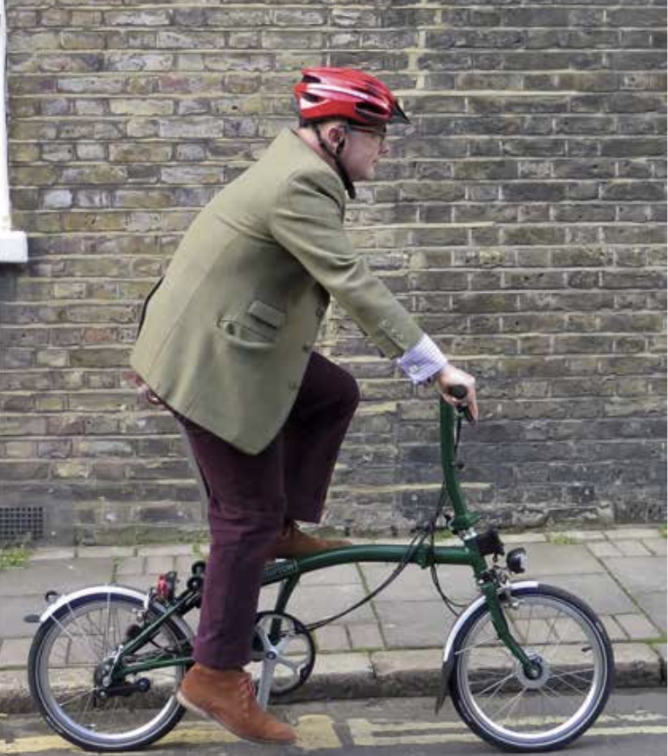
Country Life's very own John Goodall and Hugh Jackman are both fans of a collapsible bike.
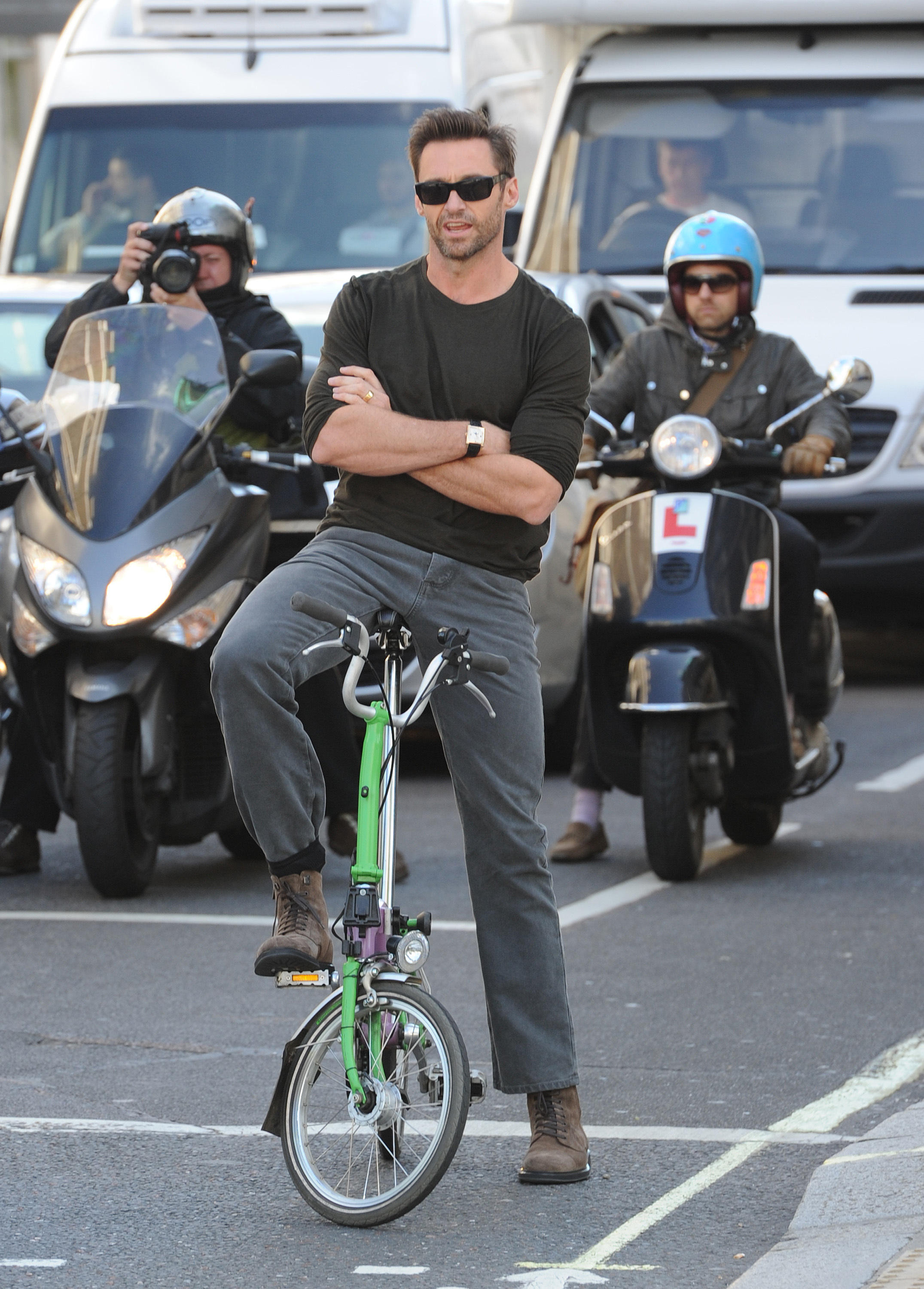
‘It is the heaviest, worst-handling and slowest bike I've ever owned. It is also, by a margin, my favorite ever bike. It's the one that has had the most impact on how I live my life, on my quality of life. It fits in with London, because I'm in a flat, so I haven't got much room. I don't lock it outside the office. It comes in with me. I go to the pub. It comes in the pub. They're great. They are perfectly tailored for living in London.’
In Will’s eyes, the big city is unnavigable without one. ‘I think it has really, really contributed to the complete shift of how people think about cycling in London,’ he says. ‘It's so flexible, because it takes away fear — fear of the bike being stolen and fear of being stranded and not being able to go somewhere with your bike, because you can fold it up, jump on an Uber or get on a tube. Also, there's something rather joyous about the Brompton. It's very nippy and it's very agile. So we've contributed to that.’
He offers to loan me a bike so that I can try for myself. I um and err, not a confident cyclist at the best of times, and fearful of London’s roads after hearing of a friend’s dad’s life-changing accident while riding a bike in the city. ‘Life's too short. F**k it. Just do it.’ Will responds. ‘Say yes and grab the opportunity.’ With that kind of attitude, it’s undeniable that for Brompton, the only way is up as they look forward to their next 50 years of being the most useful, and funniest-looking bike in London.
Lotte is Country Life's digital writer. Before joining in 2025, she was checking commas and writing news headlines for The Times and The Sunday Times as a sub-editor. She has written for The Times, New Statesman, The Fence and Spectator World. She pens Country Life Online's arts and culture interview series, Consuming Passions.
-
 No more froths, no more foams, no more tweezers. Classic dining is making a comeback. Thank god
No more froths, no more foams, no more tweezers. Classic dining is making a comeback. Thank godFrom prawn cocktail and Arctic roll to starched tablecloths and ‘nicotine cream’ on the walls, it’s out with the new and in with the old in the restaurant world
-
 Is this the end of the Forever Home?
Is this the end of the Forever Home?The classic dream of finding a family house in which you can settle down, raise a family and grow old has never been harder to obtain. So has the concept of the 'Forever Home' had its day? Annabel Dixon reports.
-
 No more froths, no more foams, no more tweezers. Classic dining is making a comeback. Thank god
No more froths, no more foams, no more tweezers. Classic dining is making a comeback. Thank godFrom prawn cocktail and Arctic roll to starched tablecloths and ‘nicotine cream’ on the walls, it’s out with the new and in with the old in the restaurant world
-
 Ho Ho House of Commons: A simple guide to the best Westminster gifts, featuring a duck that is also Big Ben, a cat called Attlee and an infamous jumper
Ho Ho House of Commons: A simple guide to the best Westminster gifts, featuring a duck that is also Big Ben, a cat called Attlee and an infamous jumperThe House of Common’s gift shop has got everything from a plushie of Attlee, the Speaker’s miserable looking cat, to a rubber duck that pays tribute to the mighty work of the Suffragettes.
-
 ‘I 100% always knew that I was going to do something creative’: Petra Palumbo on her design house, love of Scotland and consuming passions
‘I 100% always knew that I was going to do something creative’: Petra Palumbo on her design house, love of Scotland and consuming passionsThe London ‘It Girl’ turned Scotland-based designer makes tiles with men’s torsos and Henry hoovers on them, has a pug called Raisin and is married to the 16th Lord Lovat Simon Fraser. She chats to Lotte Brundle.
-
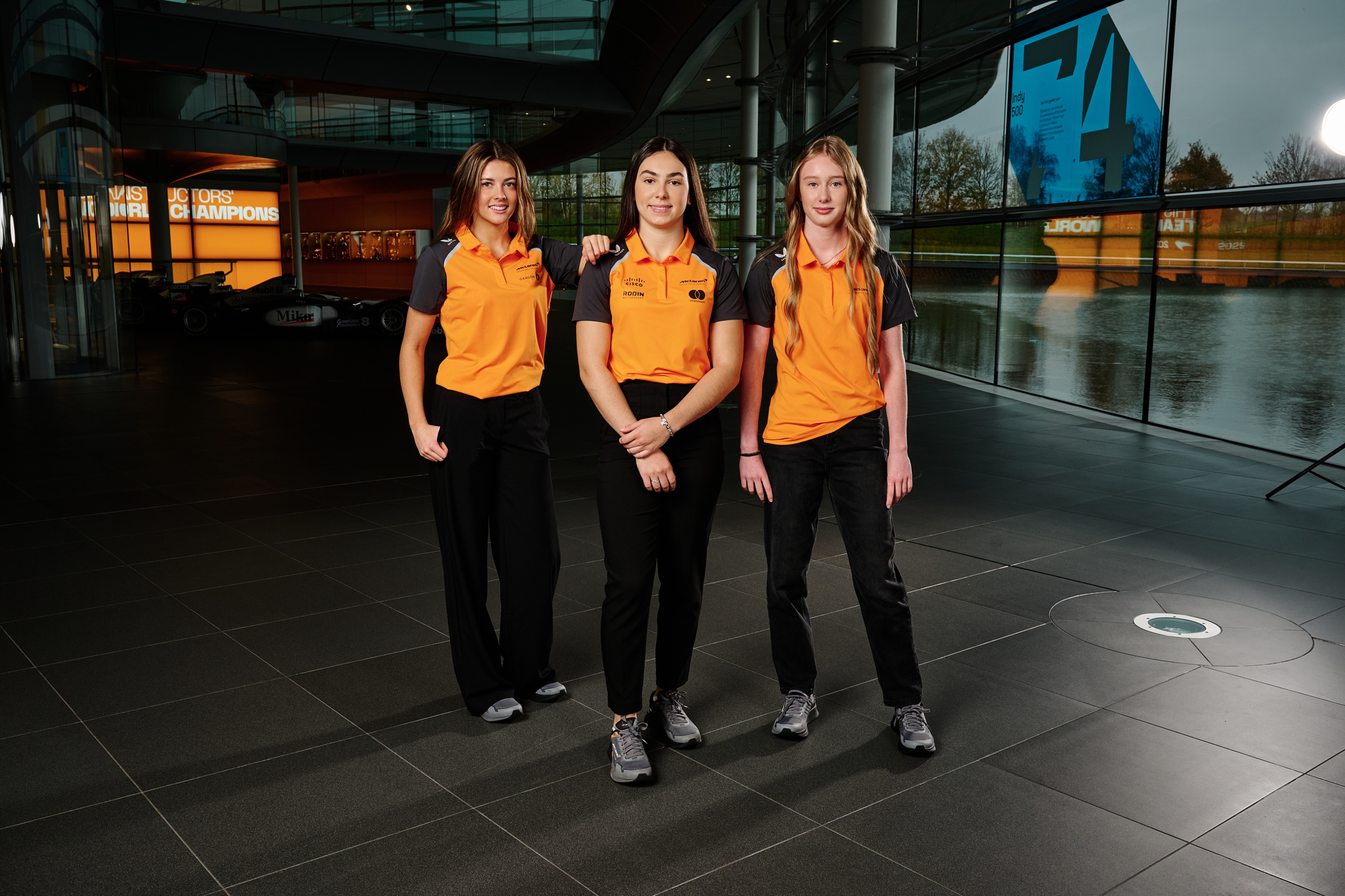 McLaren's three Ellas and the future of motorsport
McLaren's three Ellas and the future of motorsportMcLaren is rewiring the pipeline for women, on track and across the motorsport landscape
-
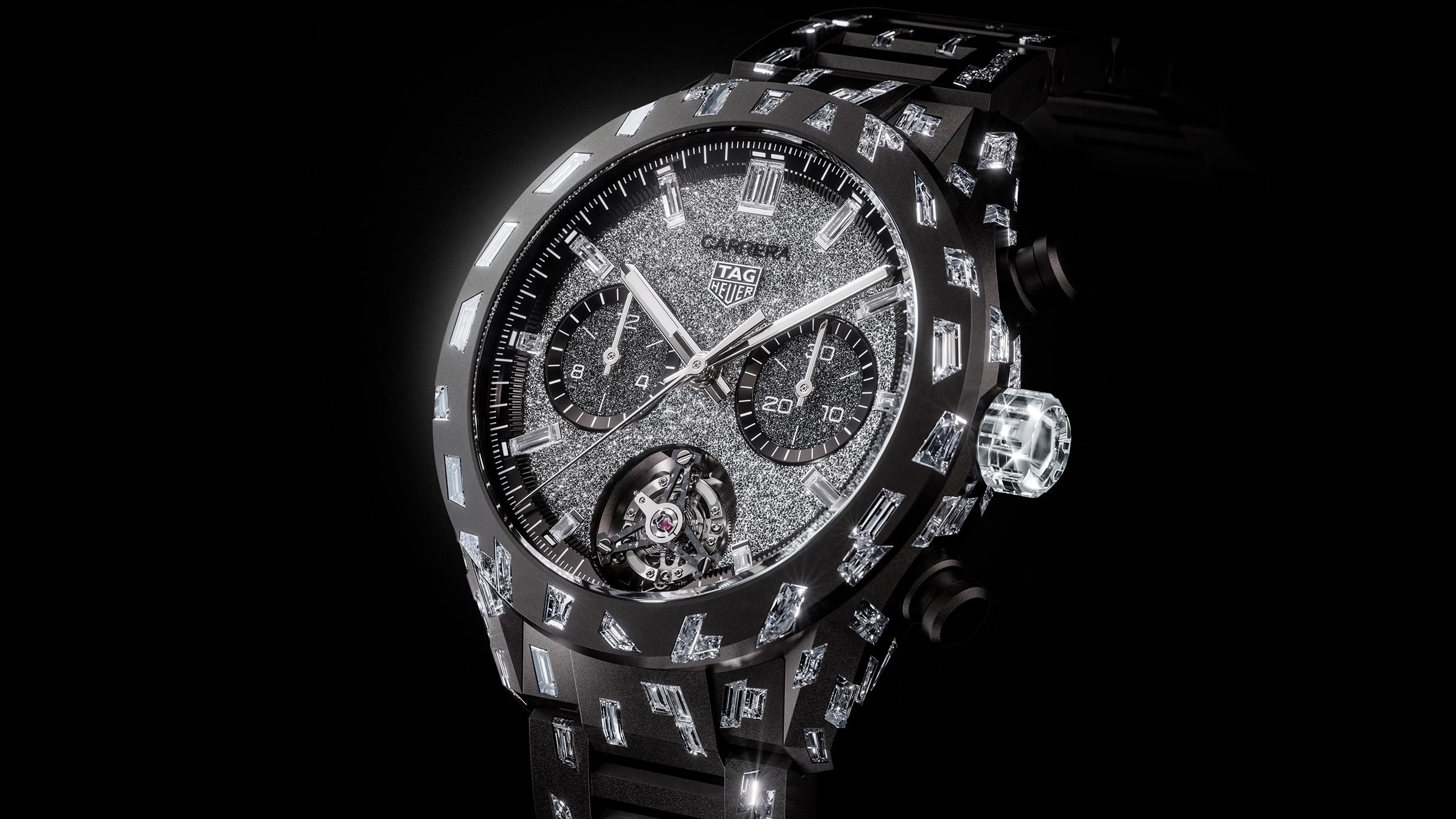 The real deal: Can you tell the difference between mined and synthetic diamonds?
The real deal: Can you tell the difference between mined and synthetic diamonds?And would you buy a watch studded with laboratory-made ones?
-
 The wine stash of one of Switzerland’s most secretive billionaires is up for auction
The wine stash of one of Switzerland’s most secretive billionaires is up for auctionA selection from the personal cellar of the late Jörg G. Bucherer is for sale via Sotheby’s. Highlights include double magnums of Petrus, a case of Lafleur 1990, nine cases of Clos de Tart and six 12-bottle cases of Domaine Leroy.
-
 'It is hard to beat the excitement of watching a peregrine you have trained stoop from 1,000ft, going more than 100mph' — the complicated world of falconry
'It is hard to beat the excitement of watching a peregrine you have trained stoop from 1,000ft, going more than 100mph' — the complicated world of falconryA combination of spellbinding sport and profound empathetic connection, falconry–a partnership in which the bird maintains the upper hand–offers a window into ‘the deeper magic’.
-
 What is everyone talking about this week: More than half the country owns a pet and nearly half our marriages end in divorce — no wonder pet-nups are on the rise
What is everyone talking about this week: More than half the country owns a pet and nearly half our marriages end in divorce — no wonder pet-nups are on the risePet-nups, a formal agreement between couples over what should happen to their pets in the event of a split, are on the rise.
